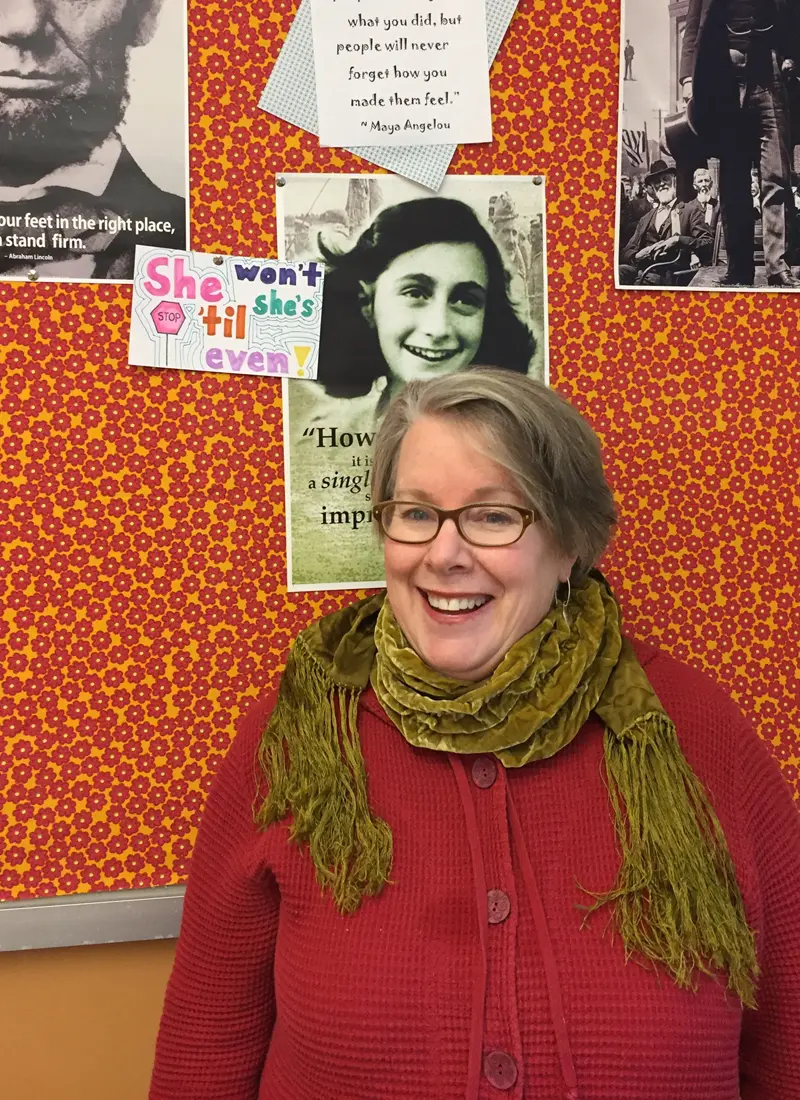Kathleen Curtin, The Food Historian

Food means connections with people, with the past and with the future. I talk to the kids in my social studies classes about immigration, and I’ve noticed that other stuff falls away quickly as immigrants adapt to a new country ... food sticks.
History grad Kathleen Curtin ’86 may just know more about the first Thanksgiving than anyone. A former food historian at Plimoth Plantation, she is co-author of “Giving Thanks: Thanksgiving Recipes and History, from Pilgrims to Pumpkin Pie.”
The book is full of both history and recipes, which she collected from historic documents and cookbooks and contemporary home cooks across the country. The recipes run the gamut from authentic English colonial fare to regional specialties like Southern sweet potato pie and adaptations by newer immigrants, including Cuban stuffed turkey and Lebanese rice and meat stuffing.
“Thanksgiving is a uniquely American holiday,” Curtin says. “It’s the only holiday that we all share. We all sit down at that communal table and we all eat very much the same foods. Historically, it had very religious connotations, but it’s become an extremely secular holiday when it doesn’t matter what religion you are.”
A few years ago, Curtin left Plimoth Plantation and earned her teaching degree at the University of New Hampshire. She’s now a U.S. history teacher at Portsmouth (N.H.) Middle School, where she uses Spam to teach her curious eighth-graders about World War II rationing. But Curtin still keeps a finger in the pumpkin pie. She volunteers at the Museums of Old York in York, Maine, helping well-known chefs put on hearth-cooking demonstrations. An accomplished chef herself, she also cooks for Ethel Kennedy and her family in Hyannis, Mass., for a week every summer when the regular chef, a friend, is on vacation.—KW

